The catalytic converter removes harmful byproducts from a vehicle's exhaust, such as carbon monoxide, converting it
into carbon dioxide and water vapor.
The catalytic converter is part of a car's exhaust system on the vehicle's underside between the muffler and the
engine. It is usually located towards the back of the vehicle. It is of larger diameter than the exhaust pipe.
To remove a catalytic converter, you need to cut out the large brackets that hold it in place.
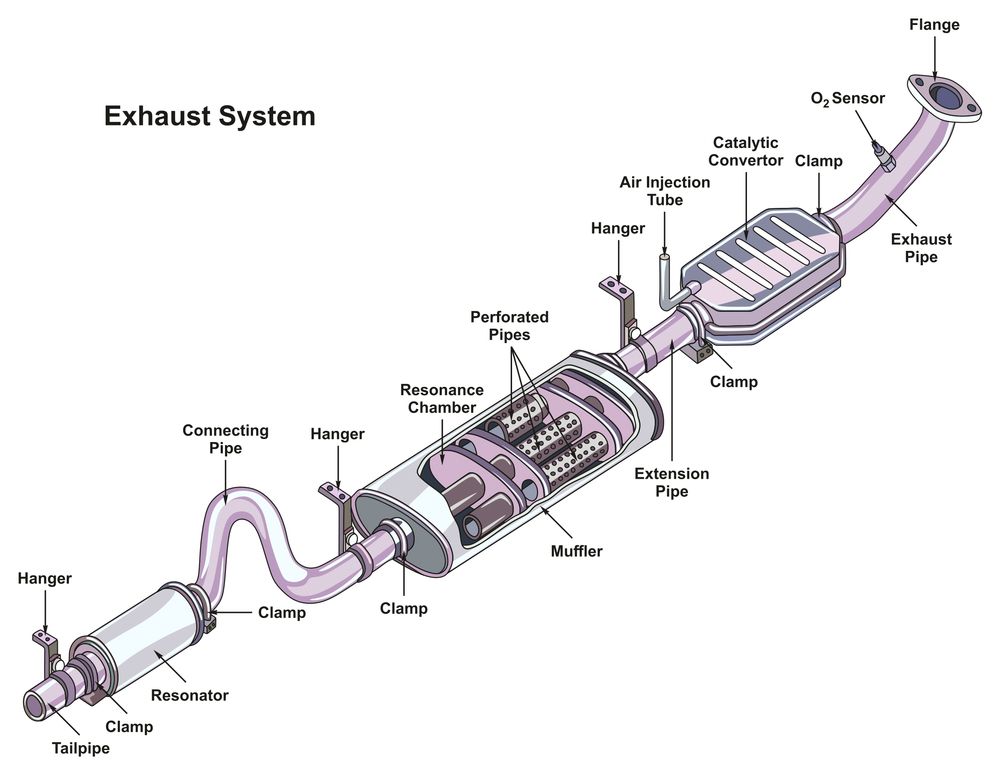 Catalytic Converter And Exhaust System Diagram
Catalytic Converter And Exhaust System Diagram
What Does A Catalytic Converter Look Like?
The catalytic converter has a larger diameter than the exhaust pipe. It houses active materials that convert the
engine's toxic exhaust into less harmful gasses.
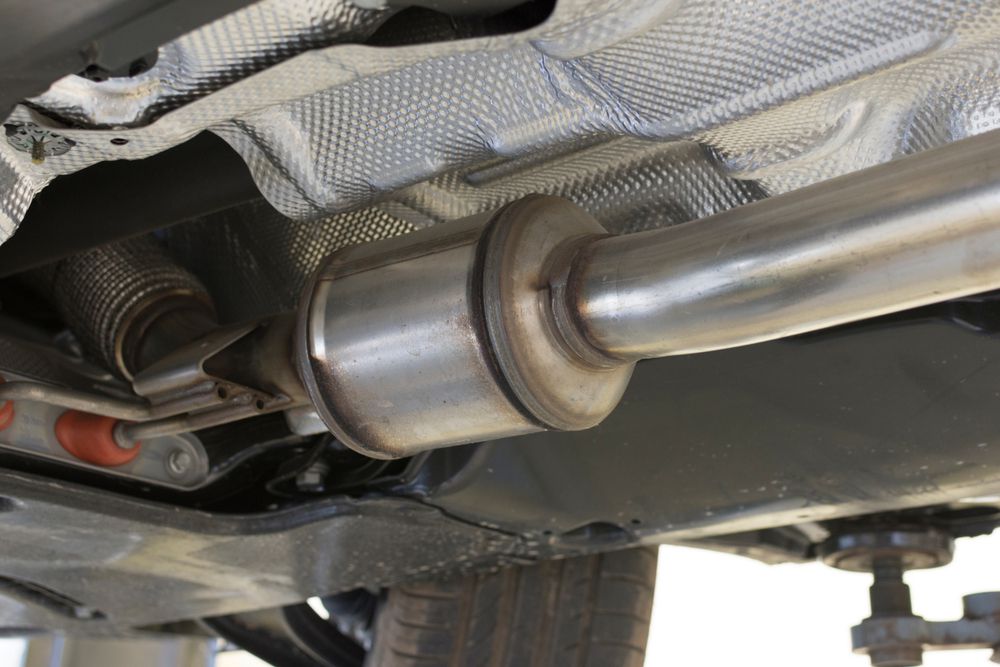 Cylindrical Catalytic Converter Located On Underside Of Vehicle
Cylindrical Catalytic Converter Located On Underside Of Vehicle
It looks almost like a second muffler. It can have a perfectly cylindrical shape, honeycombed, or flat shape,
depending on the make and model of your vehicle.
How Does A Catalytic Converter Work?
A catalytic converter is made of active catalytic materials such as aluminum oxide (Al2O3), cerium oxide (CeO2), and
rare earth stabilizer metals such as platinum (Pt), palladium (Pd), and rhodium (Rh).
These elements work to convert harmful exhaust gasses into less toxic byproducts.
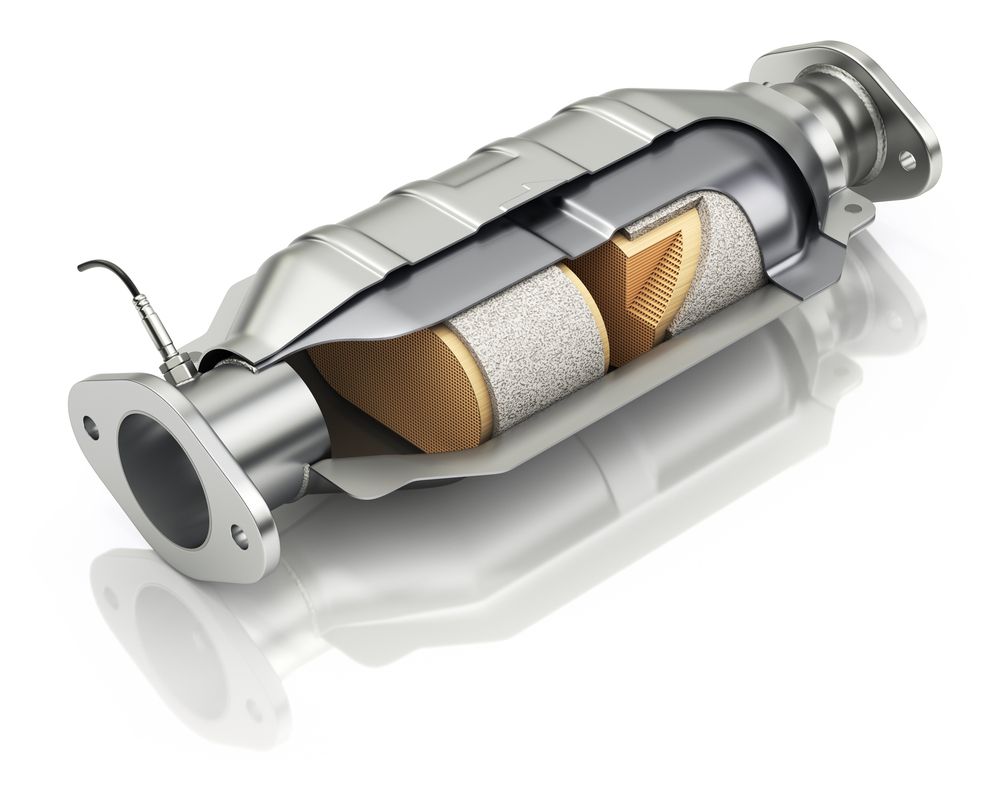 Catalytic Converter Cutaway
Catalytic Converter Cutaway
Two catalytic events take place when the exhaust gasses pass through the catalytic converter:
- First, the exhaust gas passes through the reduction catalyst of the catalytic converter, where nitrogen oxide
(NO) is eliminated.
- Second, unburned hydrocarbons (HC) and carbon monoxide (CO) are eliminated in the oxidation catalyst.
In a well-functioning catalytic converter, the tailpipe emissions will only consist of water (H20), carbon dioxide
(CO2), and nitrogen (N2).
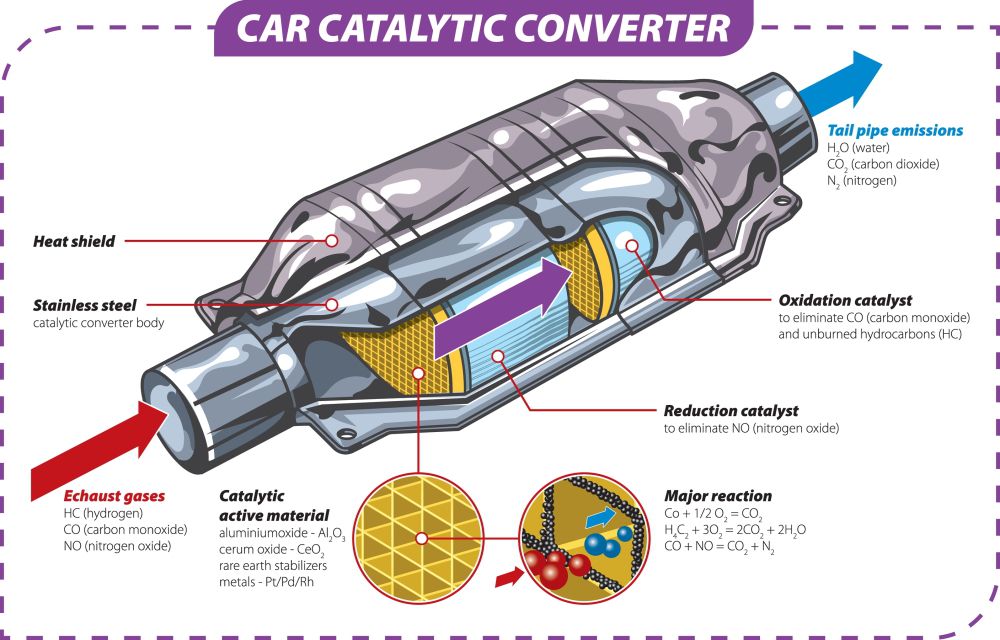 Diagram Showing How A Catalytic Converter Works
Diagram Showing How A Catalytic Converter Works
What Are The Signs Of A Failing Catalytic Converter?
A restriction in the engine's exhaust system will severely hamper its performance.
When a catalytic converter gets old or contaminated, it tends to clog, restricting the exhaust system.
Signs that the catalytic converter is failing are:
- A laggy engine or throttle response.
- Black exhaust smoke.
- A rotten egg (sulfur) smell.
Problems in one system in your car can lead to problems in the parts or systems of your vehicle.
Things that can damage a catalytic converter include:
- leaded fuel or fuel contaminants can damage the catalyst metals
- a faulty head gasket will let engine coolant into the combustion chamber, which will lead to the catalytic
converter clogged
- poor combustion due to faulty spark plugs or malfunctioning ignition system
- burning oil in the combustion chamber
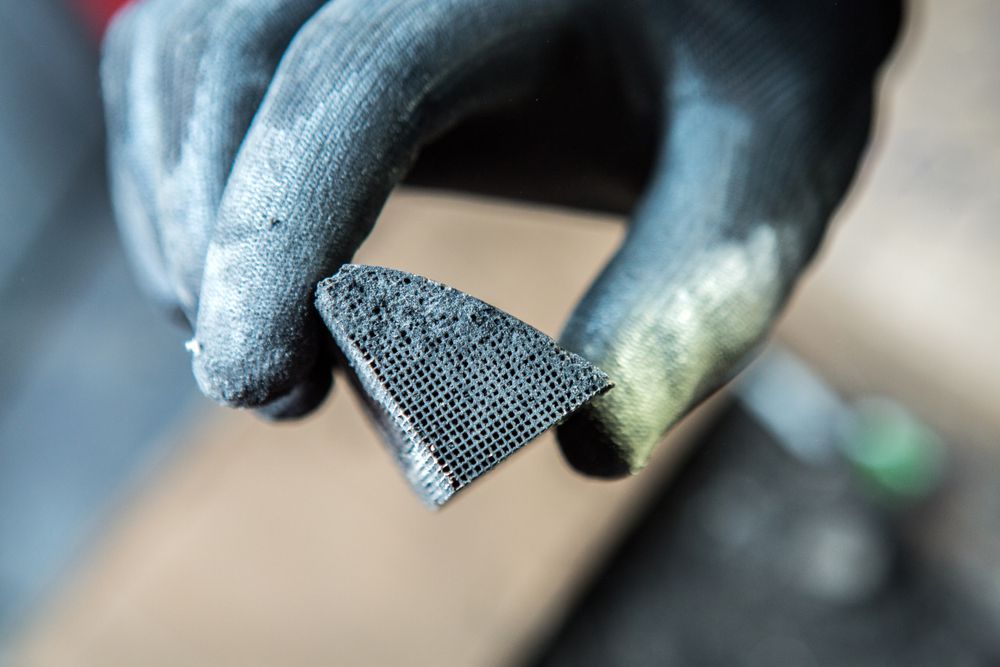 Mechanic Holding Piece Of Clogged Catalytic Converter
Mechanic Holding Piece Of Clogged Catalytic Converter
Catalytic converter cleaner can work for minor problems but is not adequate for more significant issues.
To prevent problems with your catalytic converter, follow the recommended maintenance schedule provided by the car
manufacturer.
A small amount of time and cost upfront will go a long way in extending the lifespan of your catalytic converter and
the other systems in your car.
This will save you time, stress, and money in the long run.
How Much Does It Cost To Fix A Catalytic Converter?
There are a few options for dealing with a damaged or failing catalytic converter.
The first is to try to repair the existing converter. The average cost to repair an existing catalytic converter
ranges between $1,000 and $3,000.
The repair shop has to replace precious metals within the converter like platinum, rhodium, and palladium.
Unfortunately, these are difficult and expensive to acquire.
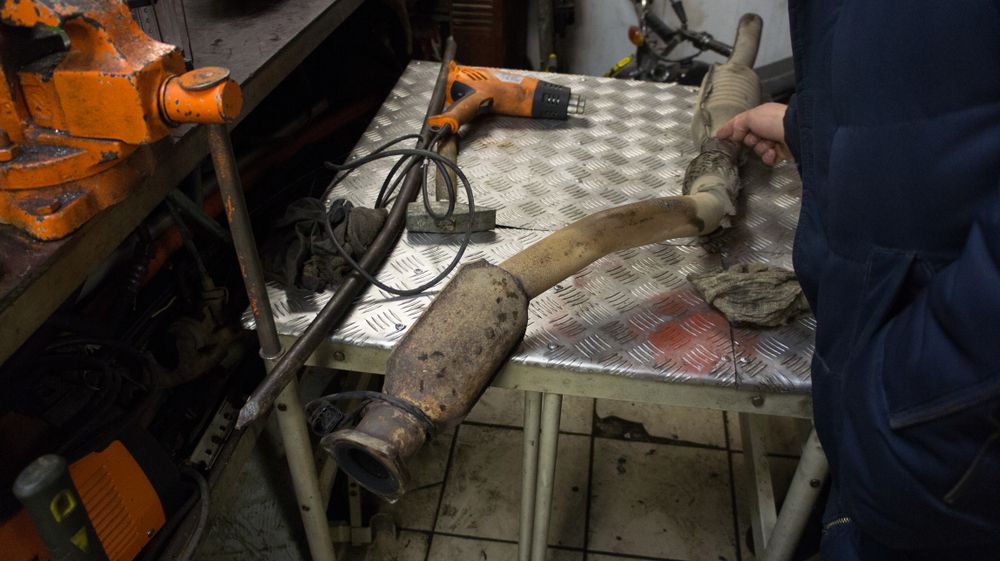 Mechanic Repairing A Failed Catalytic Converter
Mechanic Repairing A Failed Catalytic Converter
The mechanic can attempt a deep cleaning as a second option, but this will likely only be a temporary solution and
the least effective.
The third option is a complete replacement. Complete replacement will be the most expensive option and the most
effective and long-lasting.
A catalytic converter replacement will start at $2,000, and you'll have to pay the labor cost on top.
The benefit is that a complete replacement is less labor-intensive than trying to repair or clean the catalytic
converter, which will save some money.
Which Cars Are Most Likely To Have Catalytic Converters Stolen?
Virtually all vehicles are at risk of having their catalytic converters stolen due to the high value of the precious
metals contained within them.
Thieves prefer vehicles with more valuable larger catalytic
converters with higher ground clearances for easier access, such as pickup trucks like the Ford F-150
and the Toyota Tacoma.
 The Ford F-150 Is A Favorite Target Amongst Thieves Looking For Catalytic Converters To Steal
The Ford F-150 Is A Favorite Target Amongst Thieves Looking For Catalytic Converters To Steal
Catalytic Converter Anti Theft Device
There are devices on the market to help prevent catalytic converter theft. Although not 100% effective, they may
deter thieves by encouraging them to look for a less time-consuming target.
Making it difficult for thieves to crawl underneath a vehicle can go a long way in preventing catalytic converter
thefts.
Park your vehicle alongside a curb or something similar that blocks access to the underside of your car.